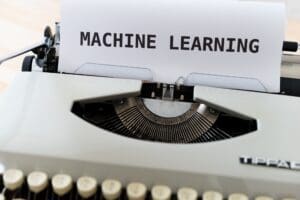Job hunting is always a hassle. It’s a brutal game, where you need to stand out among hundreds and sometimes thousands of other applicants to get “the job.” But, finding a job to apply for in the first place is not an easy task.
When I first started with data science, I was baffled about the different data science-related roles’ responsibilities. I didn’t want to choose a role that I am not completely sure about what I will be doing.
Because of the many roles and the different names, applicants may get confused and not know which role matches their specific skillsets or what they want to work on.
Considering the rising popularity of the field — that is not slowing down any time soon — I decided to write this article to simply explain the difference between the roles, and eliminate any confusion anyone on the look for a new job may have about 5 Female Researchers Shaping the Future of Computer Science.
Before we start, I must say that these titles are not fixed and may change in the future. Also, some roles may overlap and have more or fewer responsibilities based on the company hiring. However, this article should help you explore the top 10 data science roles for the most part.
1. Data Scientist
Let’s start with the most general role, data scientist. Being a data scientist – you will deal with all aspects of the project, starting from the business side to data collecting and analyzing, and finally visualizing and presenting.
A data scientist knows a bit of everything (every stage of the project), and because of that, they are able to offer better insights for the best solutions for a specific project and are able to uncover patterns and trends. Moreover, they will be in charge of researching and developing new algorithms and approaches.
Often, in big companies, team leaders in charge of people with specialized skills are data scientists; their skill set allows them to overview a project and guide them from start to finish.
👉A Learning Path to becoming a Data Scientist
2. Data Analyst
The second most known role is a data analyst. The skillset of a data scientist and data analysis can sometimes overlap, a company will hire you, and you will still be called a “data scientist” when most of the job you will be doing is data analytics.
Data analysts are responsible for different tasks such as visualizing, transforming and manipulating the data. Sometimes they are also responsible for web analytics tracking and A/B testing analysis.
Since data analysts are in charge of visualization, they are often in charge of preparing the data for communication with the project’s business side by preparing reports that effectively show the trends and insights gathered from their analysis.
3. Data Engineer

Data engineers are responsible for designing, building, and maintaining data pipelines. They need to test ecosystems for the businesses and prepare them for data scientists to run their algorithms.
Data engineers also work on batch processing of collected data and match its format to the stored data. In short, they make sure that the data is ready to be processed and analyzed.
Finally, they need to keep the ecosystem and the pipeline optimized and efficient and ensure that the data is available for data scientists and analysts to use.
4. Data Architect
Data architect has some common responsibilities with data engineers. They both need to ensure that the data is well-formatted and accessible for data scientists and analysts and improve the data pipelines’ performance.
In addition to that, data architects need to design and create new database systems that match the requirements of a specific business model and job requirements.
They need to maintain these database systems, both from the functionality perspective and the administrative one. So, they need to keep track of the data and decide who can view, use, and manipulate different sections of the data.
5. Data Storyteller
This is probably the newest job role in this list and, if I may argue, a significant and creative one.
Often, data storytelling is confused with data visualization. Although they do share some commonalities, there is a distinct difference between them. Data storytelling is not just about visualizing the data and making reports and stats; rather, it is about finding the narrative that best describes the data and uses it to express it.
It lays right in the middle between pure, raw data and human communication. A data storyteller needs to take on some data, simplify it, focus it on a specific aspect, analyze its behavior, and use his insights to create a compelling story that helps people better understand the data.
👉Data Visualization 101. 7 Steps For Effective Visualizations
6. Machine Learning Scientist

Most often, when you see the term “scientist” in a job role, that indicates this job role requires doing research and coming up with new algorithms and insights.
A machine learning scientist researches new data manipulating approaches and design new algorithms to be used. They are often a part of the R&D department, and their work usually leads to research papers. Their work is closer to academia yet in an industry setting.
Job role titles that can be used to describe machine learning scientists are Research Scientist or Research Engineer.
7. Machine Learning Engineer
Machine learning engineers are very on-demand today. They need to be very familiar with the various machine learning algorithms like clustering, categorization, and classification and are up-to-date with the latest research advances in the field.
To perform their job properly, machine learning engineers need to have strong statistics and programming skills in addition to some knowledge of the fundamentals of software engineering.
In addition to designing and building machine learning systems, machine learning engineers need to run tests — such as A/B tests — and monitor the different systems’ performance and functionality.
8. Business Intelligence Developer
Business Intelligence developers — also called BI developers — are in charge of designing and developing strategies that allow business users to find the information they need to make decisions quickly and efficiently
Aside from that, they also need to be very comfortable using new BI tools or designing custom ones that provide analytics and business insights to understand their systems better.
BI developer’s work is mostly business-oriented; that’s why they need to have at least a basic understanding of the fundamentals of business models and how they are implemented.
9. Database Administrator
Sometimes the team designing the database and the one using it are different. Currently, many companies can design a database system based on specific business requirements. However, the database’s managing is done by the company buying the database or asking for the design.
In such cases, each company hires a person — or several1to be in charge of managing the database system. A database administrator will be in charge of monitoring the database, making sure it functions properly, keep track of the data follow, and create backups and recoveries.
They are also in charge of granting different permissions to different employees based on their job requirements and employment level.

10. Technology Specialized Roles
Data science is still a developing field; as it grows, more specific technologies will emerge, such as AI or specific ML algorithms. When the field develops in that manner, new specialized job roles will be created—for example, AI specialists, Deep Learning specialists, NLP specialists, etc.
These job roles apply to data scientists and analysis as well. For example, transportation DS specialist, or marketing storyteller, and so on. Such job roles will be particular on the responsibilities it entails and will loosen the general scientist and engineers’ workload.
Takeaways
As the field of data science grows, the demand for data scientists grows as well. Not just that, new job roles get created to meet the huge demand of the industry.
The variety of data science0related roles often means that their respective responsibilities overlap a little — and sometimes a lot —causing confusion for applicants trying to get their dream job.
In this article, I went through 10 or the commonly used data science roles’ titles and a brief explanation of the responsibilities expected for each of them. Hopefully, this list will help you get the correct job for your skillset or at least give you an idea of what’s available.
Good luck!
Data science is a field that uses data analysis, statistics, and machine learning to extract useful insights from structured and unstructured data. Data scientists use tools like Python, R, and SQL to solve problems in industries ranging from healthcare to e-commerce, helping businesses make informed decisions.
Yes, data science is a great career choice. With high demand and competitive salaries, it’s a field full of opportunities. It offers roles in various industries, including tech, finance, healthcare, and entertainment. If you enjoy solving problems, working with data, and continuous learning, data science could be a perfect fit for you.
Getting into data science typically involves:
- Learning programming languages like Python or R.
- Gaining a strong understanding of statistics and mathematics.
- Practicing data manipulation with tools like pandas and Excel.
- Building a portfolio with projects showcasing your skills (e.g., predictive models or data visualizations).
Many people start with online courses or bootcamps and gradually gain experience with internships or freelance work.
AI won’t completely replace data science, but it will evolve the field. While AI automates some tasks, such as data cleaning or basic analysis, skilled data scientists are needed to interpret complex results, design models, and address unique business problems. Think of AI as a powerful assistant rather than a replacement.
If you’re curious about patterns and trends in data, enjoy logical problem-solving, and don’t mind continuous learning, data science could be for you. Try exploring beginner projects, such as analyzing datasets or creating visualizations, to see if you like the process.
Here’s how to land a job in data science:
- Learn Core Skills: Programming, statistics, and machine learning are must-haves.
- Build a Portfolio: Showcase your work on platforms like GitHub or Kaggle.
- Network: Attend data science events, webinars, and LinkedIn communities to connect with recruiters and professionals.
- Apply for Entry-Level Roles: Start with analyst positions or internships if you’re new to the industry.
Becoming a data scientist requires a mix of education, hands-on experience, and persistence. Follow these steps:
- Study programming languages, data analysis, and machine learning.
- Complete projects to apply what you’ve learned.
- Create a standout resume and LinkedIn profile.
- Continuously upskill with the latest tools and techniques in data science.
You're invited! Join SheCanCode's Women in Tech Community
Find a supportive network, opportunities, jobs & much more, so you can excel in your tech career.










